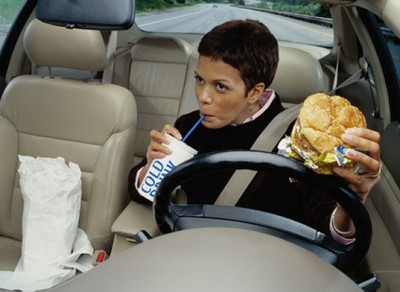A Majority of Canadians Say Distracted Driving is a Problem--Just Not Their Own Problem
 |
New Survey by State Farm probes distracted driving habits of Canadians
AURORA, ON -- May 14, 2015: Times have changed. More than half of Canadians remember not wearing a seatbelt as a child. Now, the majority wear their seatbelts and thousands of lives are saved every year, but based on a new survey released today by State Farm, drivers still have life threatening bad habits to break.
According to the national survey of Canadians in urban and rural communities, who drive, more than nine out of 10 (93 per cent) respondents feel that other drivers drive while they are distracted. However, just over half (56 per cent) believe that they themselves rarely drive while distracted. This is a striking difference from how drivers view their own abilities behind the wheel compared to those with whom they share the road.
Additionally, 30 per cent of respondents indicated the most dangerous thing a person can do on the road is to drive distracted. About one third, (33 per cent) acknowledged that they check their cell phone or handheld device once or more while driving and 35 per cent admit to driving while distracted.
"We know that distracted driving is a serious problem in Canada," says John Bordignon, Media Relations, State Farm. "A 2011 Alberta Transportation study reveals that distracted drivers are three times more likely to be in a crash than attentive drivers. And, distracted driving is more than talking on the cellphone, texting or eating; it includes allowing your attention to wonder to things away from the road. These distractions can have devastating results and are completely avoidable."
The Big Distractions
Overall, survey respondents say they are most guilty of being distracted by things outside of their car like houses and people, and those over the age of 65 (54 per cent) are the biggest offenders. Other findings include:
Respondents aged 35-44 were the biggest offenders of texting while driving (16 per cent) followed by those aged 18-34 (15 per cent)
Respondents aged 35-44 cite that they often eat and drink while driving (21 per cent)
Respondents aged 35-44 are also most guilty of being distracted by passengers/children in their car (21 per cent)
Families and Their Driving Habits
Adults worry about their children driving while distracted:
Among respondents with children under the age of 20, 40 per cent said they try to teach their teen to not use their cell phone while driving
Seven out of 10 parents list distracted driving and speeding as their teen's most common driving errors
Respondents under the age of 20 said one of the most common bad habits of one or both parents is driving distracted (23 per cent)
Reducing Distractions
So far, personal experiences like traffic fines and collisions have proven to be the most successful deterrent for reducing distracted driving, with 58% of those surveyed indicating they are most likely to stop distracted driving behavior if fines are increased or they are involved in a collision.
"It obviously makes more sense for Canadians to drop their bad habits now than to wait for a collision or a ticket to curb their behaviour," says Bordignon. "Turning off your mobile device, staying focused on the road and the area you are travelling in, eating ahead of a journey, or pulling off the road to eat or make a call, are simple practices we can adopt immediately to significantly reduce the distractions we face while driving."
Animals Always a Concern
A split second of distracted driving is all it takes to hit someone or something. When asked what animal they are most afraid of hitting while driving, the majority of respondents (65 per cent) cite a deer or a moose followed by hitting a dog or cat (21 per cent).
A Transport Canada report found that between four to eight large animal vehicle collisions take place every hour. The Ontario Ministry of Natural Resources estimates there is a motor vehicle-wild animal collision every 38 minutes and approximately one out of every five motor vehicle collisions involves a wild animal. For example, more than 300 New Brunswickers are involved in a moose-vehicle collision every year.
State Farm partners with the Traffic Injury Research Foundation (tirf.ca) which creates evidence-based reports about road safety issues that help prevent injury and save lives. This includes a new Wildlife Roadsharing Resource Centre which will be released later this year. It will provide detailed data about where, when and what type of animals are prevalent in various parts of Canada. This publically accessible database will help governments and law enforcement better understand wildlife-vehicle collisions and how best to educate and alert motorists on how to avoid them.


